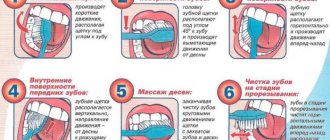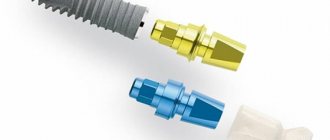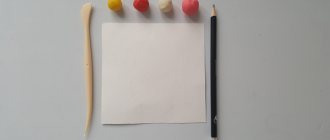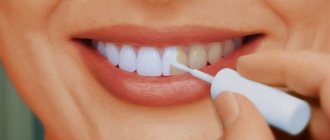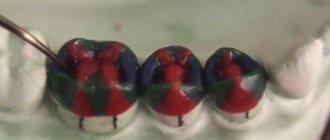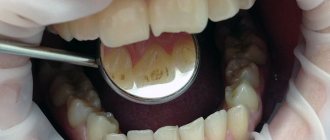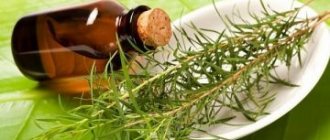Hand Soap Basics
Records of the first soap made from tallow and ash date back to 2800 BC. Initially, it was used for medical purposes - they treated various skin diseases and washed wounds, which healed faster after this procedure. In Europe, soap factories appeared only in the 10th century: in France, Spain, Italy. European soap was thin, contained large amounts of olive oil, and was available only to wealthy people. French soap, which included essential oils from Provence, was considered the best.
Read also: How to take a beautiful photo at home
Despite the many times improved production technology and the diversity of the range of factory products, handmade soap is now becoming increasingly popular. And it’s not surprising, because each block is unique. A home soap maker can bring any idea to life: choose a geometric or fantasy shape, give it the desired color, decorate with dried plants or mother-of-pearl. Beautiful soap can become a bright accent in your bathroom or a heartfelt gift for a loved one.
Take into account:
How to make soap at home for ov
1. Melt the soap base. Prepare all the necessary ingredients and tools so that you have them at hand at the right time. Cut the soap base into small pieces, place in a container and place in a large saucepan in a water bath. Wait until the base is completely dissolved, while making sure that its temperature does not exceed 60 degrees. When boiling, bubbles form in the mass, which will spoil the appearance of the soap, especially transparent ones.
2. Add base oil. If you are using a ready-made base or baby soap, add base oil at the rate of one tablespoon per 100 g of soap. If you are making soap from scratch, follow the recipes. You can add one oil or several at once. With palm oil, the soap turns out to be as hard as possible, castor oil gives excellent foam, and coconut oil is responsible for the quality of cleansing. Olive oil is suitable for creating baby and hypoallergenic soap. Avoid sunflower, flaxseed and corn oils - they quickly go rancid and the soap spoils.
3. Add dye. For soap making from the base, professionals recommend choosing food colorings that do not cloud the mass and do not precipitate. 5 drops per 100 g of base is enough to give the soap a bright, rich color. When making natural soap from scratch, it is better to use mineral pigments: for example, titanium dioxide for whitening, chromium oxide for green, iron oxide for red.
4. Add essential oil. The concentration of essential oil in soap base is usually 1-4%. In made-from-scratch soap, the oil content varies depending on its volatility. Heavy oil - cedar, neroli, cinnamon - up to 1%. Light oil - orange, tea tree, eucalyptus - up to 10%.
5. Give the desired shape. Spray the selected mold with alcohol from a spray bottle. Carefully fill it with liquid soap and place it in a cool place for a couple of hours or in the refrigerator for five minutes. The packaging of the soap base usually indicates the hardening time. After the soap has hardened, dip the mold into hot water and remove it. Place on paper and leave to dry for two days.
Indirect modeling steps
First, the dentist takes impressions of the upper and lower jaws. In this case, silicone is used, since it is very important that the material is of high quality. Then the doctor records the habitual closure of the jaws, preparing the bite ridges, and performs registration using a face bow.
The next stage is work in the articulator. This is the name of a special device that allows you to simulate the movement of the lower jaw and debug all chewing movements of the dental apparatus. If the bite decreases, then with the help of special studies, taking into account facial characteristics, they calculate how many millimeters it needs to be raised.
A silicone model of teeth is placed on a plaster base in an articulator and analyzed. At the same time, the dental technician takes into account the functional and aesthetic wishes of the patient and the dentist. He then makes a wax model and shows it to the patient. If necessary, correction is made.
If the patient is satisfied with everything, then a permanent prosthesis is made in the laboratory based on the Wax-up model.
How does forward modeling work?
Mock-up modeling is performed directly in the oral cavity. It allows you to determine the optimal shape of the prosthesis. Direct modeling can be figuratively compared to trying on a dress.
The doctor makes silicone impressions of the teeth. Great importance should be paid to modeling the palatal surface, without which it will not be possible to make a full-fledged cast.
Composite plastic is placed into the silicone impression (it is better to use a material that is different in color from the teeth) and placed on the patient’s teeth. The impression is then removed and excess materials are removed from it. If necessary, increase the size of the teeth and reduce the width of the spaces between them.
Next, the dentist, using special brushes and prophylactic paste, cleans the teeth of plaque. At the same time, no manipulations are performed with the teeth: they are not prepared or sawed, as with conventional prosthetics, which allows maintaining the integrity of the dental apparatus.
The base shade of enamel and layer-by-layer dentine are applied to the template. Next, the doctor restores the structure of the tooth, forming anatomical details on the surface of the model, including mamelons (the so-called protrusions and tubercles on the teeth). Restoration of the dental structure is carried out sequentially, starting from the oral surface and gradually moving to the vestibular surface. Finally, an enamel shade application is made.
Mechanical finishing is carried out after the surface of the model has dried. If the model is even a little wet, it will be difficult to visually control the quality of grinding. Polish the surface carefully using special silicone heads of different shapes. In this case, their rotation frequency should be low.
The teeth are treated with a special fixing glue and the prepared model is attached to them.
The patient can walk around with temporary teeth, which will allow him to observe his sensations and determine what exactly needs to be corrected. The doctor will also have the opportunity to study the reaction of the mandibular joint.
The technician can produce several models so that the client can make the best choice.
If the patient no longer has any complaints, then the resulting model is sent to the laboratory, where permanent dentures are made based on it.
It is especially recommended to use Mock-up models for patients who need to improve their bite, as well as for those whose teeth are severely worn out. The models are also irreplaceable when performing prosthetics on implants.
Modeling from plastic
Plastic is another material from which you can create a beautiful tooth model. This is a fairly dense, non-sticky material that does not require special preparation for work, but it is necessary to observe the conditions for its storage: temperature changes at which the material is stored can have a negative impact on its properties. Plastic is convenient because you can work with it for an unlimited amount of time, it does not harden, which makes it possible to work out the microrelief of the future model in more detail and clearly, and make the necessary adjustments during the work.
Modeling tooth 36 from plasticine: main steps
Plasticine is perhaps the most common material; it is easily accessible and does not require special preparation for work. Having taken the required amount, just warm it up, knead it in your hands, and you can start working. Having no experience working with this material, in the first stages it is better to work without tools to feel its properties, and then create shapes using tools. After kneading, the plasticine is ready for modeling, but it does not need to be heated for long, as it becomes too soft and sticky and will not hold its shape well.
Let's consider the main stages of modeling the 36th tooth from plasticine. We give the plasticine the shape of a ball (Fig. 23).
Rice. 23. Giving the material a ball shape
Having outlined the main surfaces and tops of the tubercles of the future model, we deepen the first-order fissure of the F-shape. As a result, five tubercles are formed on the chewing surface (Fig. 24) (1 - anterior lingual, 2 - posterior lingual, 3 - anterior buccal, 4 - posterior buccal, 5 - distal).
Rice. 24. Formation of the overall outlines, the tops of the main cusps: anterior lingual (1), posterior lingual (2), anterior buccal (3), posterior buccal (4) and distal (5). Surfaces: M - mesial, D - distal, V - vestibular, L - lingual
Using the tool (Fig. 25), modeling of the distal ridge (B), longitudinal ridge (A), medial ridge (C), anterior lingual tubercle (1) and modeling (Fig. 26) of the medial ridge (B), longitudinal ridge ( A), distal ridge (C), posterior lingual tubercle (2).
Rice. 25. Modeling of the distal ridge (B), longitudinal ridge (A), medial ridge (C), anterior lingual tubercle (1). (2) posterior lingual cusp, (3) anterior buccal cusp, (4) posterior buccal cusp, (5) distal cusp
Rice. 26. Modeling of the medial ridge (B), longitudinal ridge (A), distal ridge (C), posterior lingual tubercle (2). Modeling is carried out with a spatula
Rice. 27. The final result, the model of the lower jaw molar is made of plasticine
Useful properties of soap
Any hand soap recipe includes base and essential oils. Its beneficial properties largely depend on them. Let's figure out how to make handmade soap so that it brings exactly the result you need.
First, let's look at the base oils. Olive is a universal option for all skin types, including dry and sensitive. Coconut heals and whitens the skin, creates a protective film from ultraviolet radiation. Castor oil is ideal for sensitive skin.
A good solution for creating moisturizing soap is grape seed oil. It contains fatty acids that easily penetrate skin cells and nourish it. In addition, it regulates the functioning of the sebaceous glands and helps maintain good condition of oily skin.
Avocado, mango, apricot kernel, and wheat germ oils effectively fight signs of aging. Sea buckthorn accelerates wound healing and is used to get rid of acne. Cocoa butter tones and softens the skin at the same time.
Let's look at what effect you can expect from the most popular essential oils:
- Sweet orange. Rejuvenates, eliminates comedones, tightens and stimulates collagen production.
- Verbena. Works as an antiseptic and antidepressant, calming and improving mood.
- Cedar. It has a deodorizing effect and treats skin diseases.
- Lavender. Prevents the appearance of the first signs of aging and blackheads, removes irritation and restores the elasticity of blood vessels.
- Neroli. Removes rosacea, comedones and the appearance of cellulite.
- Patchouli. Perfectly softens the skin, preventing cracks. Facilitates the course of dermatoses and makes scars less noticeable.
- Tea tree. Thanks to its bactericidal, antiviral and antifungal properties, it is indispensable for frequent herpes, fungal infections, acne, eczema and other skin diseases
If you use handmade soap, only beneficial substances penetrate into your skin, and not complex chemical compounds. Natural vitamins, fatty acids and other microelements are bioactive, promoting accelerated cell regeneration. The skin retains its freshness, elasticity and firmness for a long time.
Causes
The cause of pain in the teeth can be both dental and non-dental reasons.
Dental include:
- caries or its more severe form pulpitis;
- gingivitis or periodontitis, when the gums or tissue around the tooth root become inflamed;
- periostitis, in which rotting of the alveolar processes occurs in the upper or lower jaw;
- postoperative complications or errors during filling.
Also, toothache can be a concomitant symptom of other diseases, for example:
- migraine and other types of headaches;
- maxillofacial neuralgia, including inflammation of the trigeminal nerve;
- diseases of the ENT organs;
- oncology;
- disruptions in the functioning of the cardiovascular system.
Attention! Only a dentist can determine the exact diagnosis. At home, you can only try to get rid of toothache, easing your condition before visiting a doctor.
Features of the procedure
Wax-up for aesthetic restoration is popular among orthopedists. Wax is a malleable compound that can be molded. With its help, an accurate impression of the tooth is created, taking into account the anatomical features.
The accuracy of manipulation affects the comfort of the artificial prosthesis. Following the technology will relieve the patient from pain when talking and eating.
The Wax-up technique is safe and does not cause discomfort. This is due to the absence of violation of the integrity of the oral mucosa. There is a risk of cross-reaction in those who suffer from allergic reactions to bee products. In this case, replace the composition.
